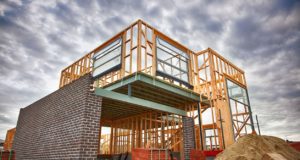Pressure is being applied—yet again—on the provincial government to increase the land supply in the GTA to decrease the costs of housing. This time the report is coming from Benjamin Tal, an economist with CIBC.
This demand matches the developer’s dream of building houses on fertile farmers’ fields and across the Oakridges Moraine. Yes, it would produce a few extra houses for people in the top income groups—but it would do nothing to meet the demand for good housing at a reasonable cost, and it would not stop the spiraling costs of housing in Toronto.
What’s more, if the Ontario government were to allow developers to build single family houses on greenfields, it would increase the existing problems of traffic gridlock, and unsustainable suburban sprawl. The price of housing would continue to spiral upwards, because demand could never be satisfied this way, and demand is what is driving up the cost of housing.
Benjamin Tal believes the problem is the cost of land, but there is lots of land available for development in our cities at a reasonable cost. Land in the Downtown core is expensive, but just outside the Downtown along the avenues like Eglinton and Lawrence there are scores of good sites. A little further out, in Scarborough and North York the land is even less expensive.
These sites are not appropriate for low density single family houses, but they are ideal for mid-rise apartment buildings of eight to twelve stories. Complexes like this can have large units, which can provide excellent housing for families, and if the buildings are located along streets with good transit, residents can live without a car. That makes living even more affordable.
So if the problem is not the availability of land at a reasonable price, what is the problem? Some blame the developers. I used to do that. But if you look closely at the problem you will soon discover that with the cost of land, material, labour, and all of the other items it takes to build condos, especially large units suitable for families, the costs make the units unaffordable for middle and low income families.
Housing costs have been a problem in Canada at least since the end of the Second World War. In the past, governments built public housing like Regent Park and Toronto Community Housing. This proved to be a disaster with rising social problems in many of these developments. Public housing was killed in the late ‘60s in Canada.
Then the federal government changed its policies and provided funds for co-operative and non-profit housing. This is mixed income housing, and this program delivered the best affordable housing program this country has ever seen. Some see it as the most successful housing program in the developed world. Short sighted federal Conservative and Liberal governments withdrew money from the program in the 1980s, and finally killed it in the early 1990s.
Canada today is the only developed country that does not have an affordable housing program. Our housing policy is driven by the “trickle down theory.” The belief is that, if new housing is built, like the condos Downtown for high income people, it will free up other housing at lower cost, for low and middle income families. Only this does not work in Toronto. Demand is too strong, and it continues to drive up prices.
Benjamin Tal is right on one thing. The only way to bring down housing prices is by increasing the supply, but his solution will only create more unsustainable suburban sprawl. The way to increase supply is by building multi-unit, affordable housing, with some government financial assistance.
We need another program like the one that created the co-op and non-profit housing of the past. The Trudeau Liberals have to deliver on their promise of a government led affordable housing program. If not, the price of housing is going to continue to climb in our cities, and hundreds of thousands of people in Toronto, the GTA, and the rest of the country are going to suffer.
Bill Freeman’s recent book is, The New Urban Agenda: The Greater Toronto and Hamilton Area
 TheBulletin.ca Journal of Downtown Toronto
TheBulletin.ca Journal of Downtown Toronto

